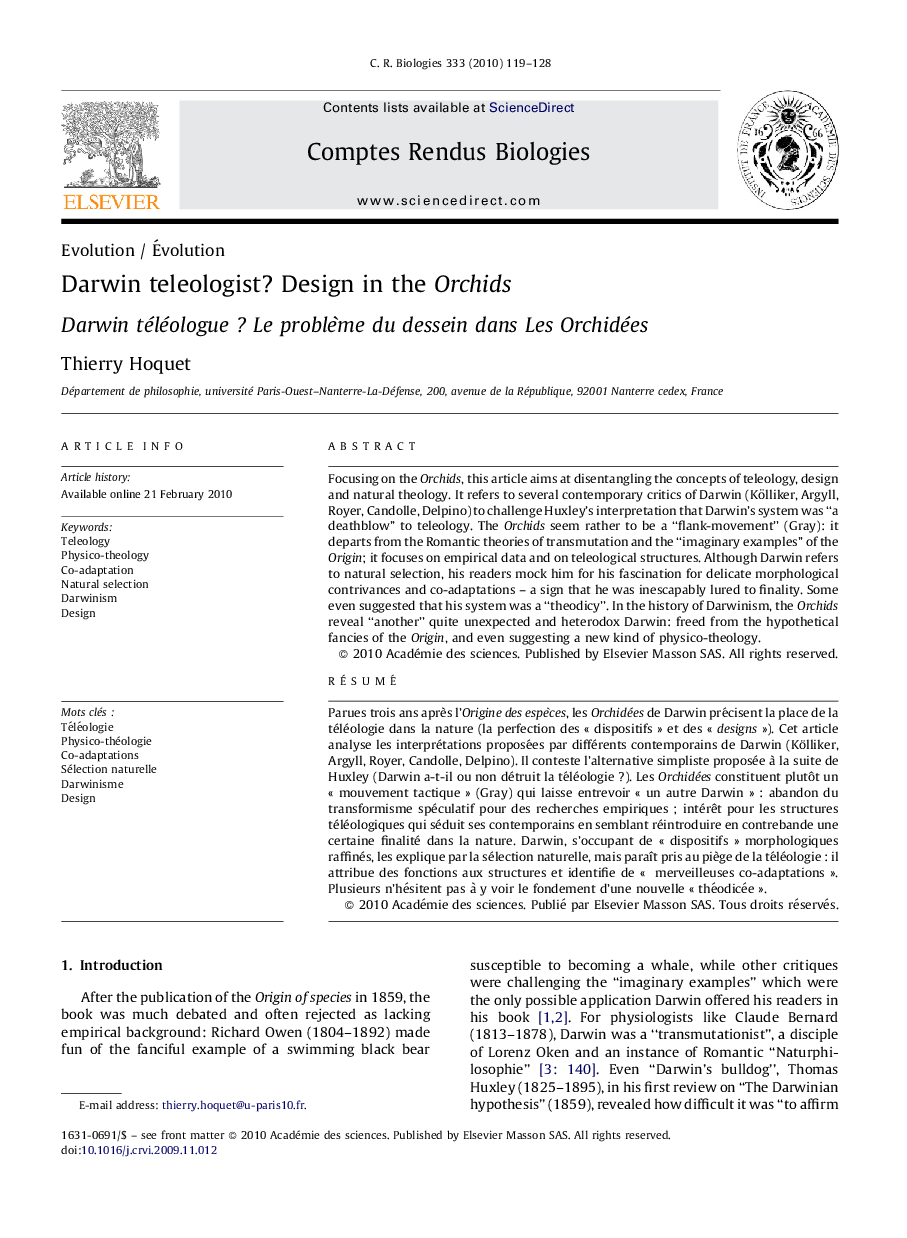| Article ID | Journal | Published Year | Pages | File Type |
|---|---|---|---|---|
| 2784057 | Comptes Rendus Biologies | 2010 | 10 Pages |
Focusing on the Orchids, this article aims at disentangling the concepts of teleology, design and natural theology. It refers to several contemporary critics of Darwin (Kölliker, Argyll, Royer, Candolle, Delpino) to challenge Huxley's interpretation that Darwin's system was “a deathblow” to teleology. The Orchids seem rather to be a “flank-movement” (Gray): it departs from the Romantic theories of transmutation and the “imaginary examples” of the Origin; it focuses on empirical data and on teleological structures. Although Darwin refers to natural selection, his readers mock him for his fascination for delicate morphological contrivances and co-adaptations – a sign that he was inescapably lured to finality. Some even suggested that his system was a “theodicy”. In the history of Darwinism, the Orchids reveal “another” quite unexpected and heterodox Darwin: freed from the hypothetical fancies of the Origin, and even suggesting a new kind of physico-theology.
RésuméParues trois ans après l’Origine des espèces, les Orchidées de Darwin précisent la place de la téléologie dans la nature (la perfection des « dispositifs » et des « designs »). Cet article analyse les interprétations proposées par différents contemporains de Darwin (Kölliker, Argyll, Royer, Candolle, Delpino). Il conteste l’alternative simpliste proposée à la suite de Huxley (Darwin a-t-il ou non détruit la téléologie ?). Les Orchidées constituent plutôt un « mouvement tactique » (Gray) qui laisse entrevoir « un autre Darwin » : abandon du transformisme spéculatif pour des recherches empiriques ; intérêt pour les structures téléologiques qui séduit ses contemporains en semblant réintroduire en contrebande une certaine finalité dans la nature. Darwin, s’occupant de « dispositifs » morphologiques raffinés, les explique par la sélection naturelle, mais paraît pris au piège de la téléologie : il attribue des fonctions aux structures et identifie de « merveilleuses co-adaptations ». Plusieurs n’hésitent pas à y voir le fondement d’une nouvelle « théodicée ».
